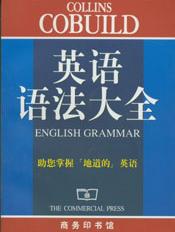牛津实用英语语法-第84章
按键盘上方向键 ← 或 → 可快速上下翻页,按键盘上的 Enter 键可回到本书目录页,按键盘上方向键 ↑ 可回到本页顶部!
————未阅读完?加入书签已便下次继续阅读!
警务长命令说:“所有人员撤出这一地区!”相当于:
The superintendent ordered that everyone should leave the area/ordered that the area should be evacuated/ordered the area to be evacuated.
警务长命令所有人员撤出该地区/撤出该地区。
4 注意:如第320节所示,使用宾语+不定式结构表示间接命令时,通常是在对受命者直接发令。但像上面 A中所示用 be+不定式结构,或像上面B3中所示用should结构来表示命令时,那么就不一定是对受命者直接发令了,可能是由第三者把命令传达给受命者。
?
'Amber demo'
322 let’s,let us,let him/them用于间接引语
?
A let’s
1 let’s通常表示建议,在间接引语中用动词suggest转述:
He said,‘Let’s leave the case at the station.’
他说:“我们把箱子存在车站吧!”
可转述为:
He suggested leaving the case at the station./He suggested that they/we should leave the case at the station.
他建议他们/我们把箱子存在车站。
(关于与suggest连用的结构,参见第289节。)
He said,‘Let’s stop now and finish it later.’
他说:“现在停下来,以后再完成它。”
可转述为:
He suggested stopping then and finishing it later./He suggested that they/we should stop then and finish it later.
他当时建议(他们/我们)那时先停下来,以后再来完成。
否定式也是这样:
He said,‘Let’s not say anything about it till we hear the facts.’
他说:“在我们没有听到事情的真相之前,对这件事什么话也别说。”相当于:
He suggested not saying anything/saying nothing about it till they heard the facts./He suggested that they shouldn’t say anything till they heard the facts.
他建议他们在没有听到事实真相之前什么都别说。
?
但如果单独使用let’s not对一个肯定的建议做出答复,那么在转述时常用下列短语:opposed the idea/was against it/ob-jected。因此:
‘Let’s sell the house,’said Tom.
汤姆说:“我们把这房子卖了吧。”
‘Let’s not,’said Ann.
安说:“我们别卖。”
可转述为:
Tom suggested selling the house but Ann was against it.
汤姆建议把房子卖了,但是安表示反对。
(关于其他表示建议的形式,参见第289节。)
2 let’s/let us有时表示对一种行动的号召,这时通常由urge/ad- vise+宾语+不定式结构表示(另参见第 320节):
The strike leader said,‘Let’s show the bosses that we are united.’
罢工领导人说:“我们给老板看看我们是团结一致的。”相当于:
The strike leader urged the workers to show the bosses that they were united.
罢工领导人鼓动工人们给老板们看看他们是团结一致的。
B let him/them
1从理论上讲let him/them表示命令。但实际上说话人对受命人时常并没有发号施令的权威:
‘It’s not my business,’said the postman.‘Let the government do some- thing about it.’
“这事与我无关。”邮递员说,“叫政府去想办法吧。”
这里说话人并不是在发号施令,而只是表示责任在谁身上,因此这类句子通常由ought/should来转述:
He said that it wasn’t his business and that the government ought to/ should do something about it.
他说这不关他的事,而是政府应该对这事想点办法。
2但有时let him/them表示真正的命令,在转述时常用say+be+不定式结构(参见第321节):
‘Let the boys clear up this mess,’said the headmaster.
校长说:“这些脏乱的东西该由男孩子们去收拾。”相当于:
The headmaster said that the boys were to clear up the mess.
校长说那些脏乱的东西让男孩子们去收拾。
‘Let the guards be armed,’he ordered.
他命令道:“警卫人员要佩带武器。”相当于:
He odered that the guards should be armed.
他命令说警卫人员必须佩带武器。
3 有时let him/them更多地表示建议而不是表示命令。在这种情况下,常用suggest或say+should来转述(参见第 289节):
She said,‘ Let them go to their consul.He’ll be able to help them.’
她说:“让他们去找他们的领事,他会帮助他们的。”相当于:
She suggested their/them going to their consul。。。/She suggested that they should go to their consul/She said that they should go to their con- sul。。。
她建议他们去找他们的领事……
4 let him/them也可以表示说话人对某事不在乎:
‘The neighbours will plain,’said Ann.
安说:“邻居会抱怨的。”
‘Let them(plain),’said Tom.
汤姆说:“让他们(抱怨)去吧。”相当于:
Tom expressed indifference.
汤姆满不在乎。
Tom said he didn’t mind(if they plained).
汤姆说(要是他们抱怨)那他也不在乎。
C let there be
说话人这样说时可以表示命令、劝告、催促或请求:
‘Let there be no reprisals,’said the widow of the murdered man.
害者的遗孀说:“千万不要搞复仇。”相当于:
The widow urged/begged that there should be no reprisals.
遗孀敦促/祈求不要去搞复仇。
D let也是一个普通动词,意为allow/permit(允许):
‘Let him e with us,mother;I’ll take care of him,’I said.
我说:“妈妈,让他跟我们一起去吧,我会照顾他的。”相当于:
I asked my mother to let him e with us and promised to take care of him.
我请求妈妈让他和我们一起去,并保证我会照顾他的。
?
'Amber demo'
323惊叹句及yes和no变为间接引语
?
A 惊叹句在间接引语中通常变为陈述句,这时应取消惊叹号。
1 由What(a)…或 How…开头的惊叹句,通常由
(a)exclaim/say that来转述:
He said,‘What a dreadful idea!’/‘How dreadful!’
他说:“多可怕的想法!”/“多可怕!”相当于:
He exclaimed that it was a dreadful idea/was dreadful.
他大声说/惊叫道这想法太可怕了。
(b)用 give an exclamation of delight/disgust/horror/relief/sur- prise(欢悦/厌恶/恐惧/宽慰/惊讶地呼喊了一声)等词语转述。
另外,如在惊叹语句后面跟一个动作,可用
(c)with an exclamation of delight/disgust等+he/she等+ 动词结构。
2 其他类型的惊叹语,如:Good!(好的!)Marvellous!(太棒了!)Splendid!(好极了!)Heavens!(天哪!)Oh!(哦!)Ugh!(啊!呸!)等,可用上面(b)或(c)来转述:
‘Good!’ he exclaimed.
他大声叫道:“太好了!”相当于:
He gave an exclamation of pleasure/satisfaction.
他愉快/满意地叫了一声。
‘Ugh!’she exclaimed,and turned the programme off.
她叫道:“呸!”然后把电视机关了。相当于:
With an exclamation of disgust she turned the programme off.
她厌恶地啐了一声,并把电视机关了。
3注意下面的用法:
He said,‘Thank you!’
他说:“感谢您!”相当于:
He thanked me.
他向我表示感谢。
He said,‘Curse this fog!’
他说:“这该死的雾!”相当于:
He cursed the fog.
他咒骂那该死的雾。
He said,‘ Good luck!’
他说:“祝你好运!”相当于:
He wished me luck.
他祝我运气好。
He said,‘Happy Christmas!’
他说:“圣诞快乐!”相当于:
He wished me a happy Christmas.
他祝我圣诞快乐。
He said,‘Congratulations!’
他说:“祝贺你!”相当于:
He congratulated me.
他向我表示祝贺。
He said,‘ Liar!’
他说:“你撒谎!”相当于:
He called me a liar.
他骂我撒谎。
He said,‘Damn!’
他说:“该死!”相当于:
He swore.他骂了声该死。
The notice said:WELE TO WALES!
标语上写着:欢迎到威尔士来!相当于:
The notice weled visitors to Wales.
标语说欢迎游客到威尔士来。
B yes和no在间接引语中用主语+适当的助动词结构来表示:
He said,‘Can you swim?’and I said‘No.’
他说:“你会游泳吗?”我说:“不会。”相当于:
He asked(me)if I could swim and I said I couldn’t.
他问(我)是否会游泳,我说不会。
He said,‘Will you have time to do it?’and I said,‘Yes.’
他说:“你有时间做这事吗?”我说:“有。”相当于:
He asked if I would have time to do it and I said that I would.
他问我是否有时间做这事,我说有时间。
?
'Amber demo'
324 混合类句式的间接引语形式
?
有些直接引语可由陈述句+问句、问句+命令句、命令句+陈述句这三种结构组成,或兼有三种句式。
A 通常每一部分都要求有各自的引导动词:
‘I don’t know the way.Do you?’he a






